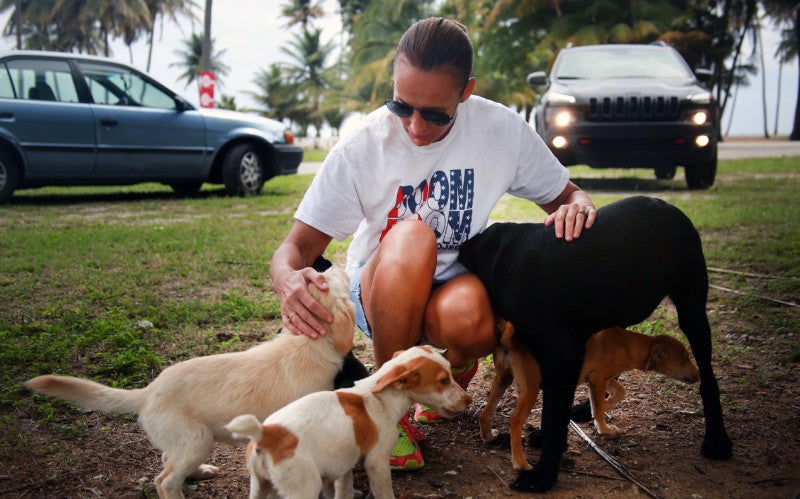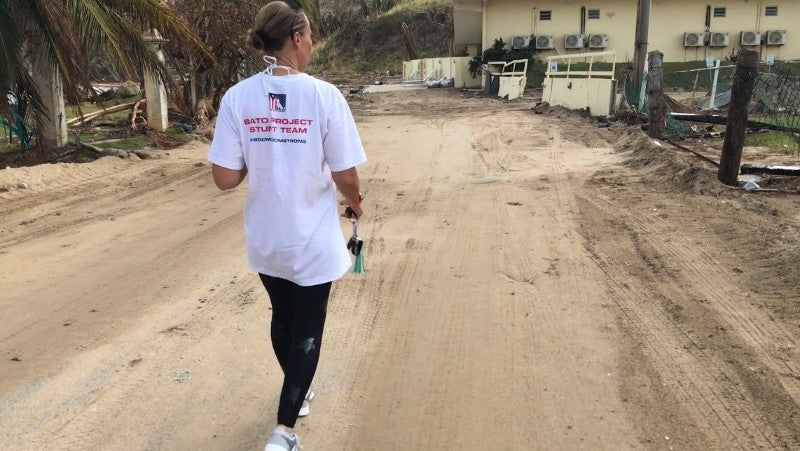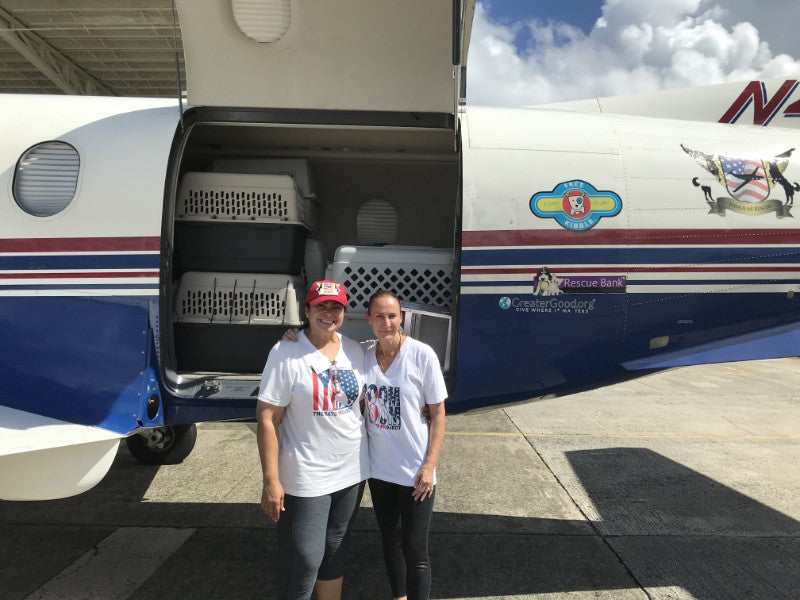Today we're checking in with Chrissy Beckles, Founder of The Sato Project and one of our partners for our INSPIRED BY WOMEN™ platform. Watch the video below for more information about The Sato Project, then read on to find out more about how she got started, what she’s been up to recently and how you can help
Tell us about the inspiration behind The Sato Project. What’s your mission as an organization?
The mission of The Sato Project is to rescue abused and abandoned dogs from Puerto Rico. We rehabilitate them, vet them to our unprecedented protocols—which are unmatched in Puerto Rico and the majority of the mainland United States—transport to New York and then find them incredible homes.

The inspiration for The Sato Project started when we adopted our first
Boom Boom is the dog in our logo and was the best foster sister to many satos that came to the Beckles family for some extra TLC. Tragically, Boom Boom died suddenly on May 5, 2016, and I truly questioned whether I could continue rescuing. Bobby
How has The Sato Project changed since you participated in the Moroccanoil Inspired by Women campaign?
Bryce Dallas Howard truly got inside my head to direct and create what is still one of my favorite pieces (ever) produced about the organization. So many people have reached out to us after seeing it and offered to help. It truly resonated with them.
Bryce, when you stop chasing dinosaurs I would love to work with you again!
Being part of the Moroccanoil Inspired By Women campaign has been especially rewarding for me as an individual. Carmen Tal has acted as a mentor and cheerleader, and the staff is incredibly invested in our work. I truly feel like I am part of a wonderful, diverse, incredibly supportive family. A quick example: I have never met Moroccanoil Artistic Director Kevin Hughes, but I feel like we are great friends. We follow each other on social media and he always has a kind word and continues to encourage me all the time. We joke that one day we will be in the same city and finally get to meet. I truly cannot wait to give that man a great big hug.

How did Hurricane Maria change the way you operate?
Hurricane Maria changed everything. We lost 12 years of work overnight. Maria decimated the island, and we are dealing with more stray and abandoned dogs than ever before, at a truly unprecedented level. It is the hardest thing I have done—trying to continue to rescue when everything was gone. I lost my home and everything I owned—including all of our Sato Project equipment and inventory. So I was homeless and trying to come up with a plan. To give a metric: Prior to Maria, The Sato Project would rescue on average 375–400 dogs per year. Since September 2017 we have rescued more than 2,000, and there is no sign of things slowing down. We are doing two large transports a month. We had a very large transport in August (at least 110 dogs) that cleared out the majority of the pups in our program, and we have a plan in place should the island be hit with another hurricane—though we are all truly hoping that this will not be the case.
What was the greatest challenge presented by the hurricane?
The entire island was without power and the majority without running water. There was an island-wide curfew in place, and if you needed gasoline it was a 9-hour wait for $10 worth of fuel. In the immediate

Tell us about the Freedom Flight on August 18, 2018. How many dogs were rescued?
We had at least 110 rescued dogs flying on August 18. We also continued our “no dog left behind” program for owned dogs, reuniting displaced families with their animals. Since Maria, we have reunited over 200 families with their dogs.
What’s the most rewarding part of the work you do?
My personal fuel is the moment of rescue. To gain the trust of a dog that may have been abused or abandoned; that is frightened and alone. That second when they look at you and they know you are there to help them. When you can pick them up and tell them that they are safe now. That is everything and is why I will always, always go back for the next one.
How can people help?
There is always something that people can do. Donations are key—we cannot operate without them, and we receive zero financial help from the Government of Puerto Rico.
You can adopt.
If you can’t adopt, foster.
If you can’t foster, donate.
If you can’t donate, volunteer.
If you can’t volunteer, spread the word!
The more people that know about our work = the more people that can help.

